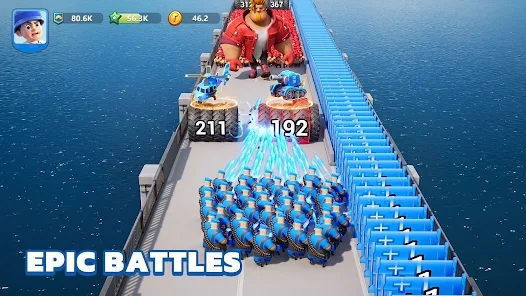The Rise of Multiplayer Indie Games: What Makes Them Stand Out in 2024?
There’s a curious shift brewing in the gaming scene. Indie developers — often overshadowed by massive AAA publishers — are crafting multiplayer experiences that resonate globally. In 2023, more than 200 new indie titles featured local or online co-op modes. By mid-2024, those numbers show no signs of slowing down.
| Platform | % of Indie Titles Supporting Co-Op/MP | Total Count (YTD 2024) |
|---|---|---|
| PC / Steam | 68% | 970+ |
| PlayStation | 44% | 560+ |
| Xbox | 41% | 450+ |
| Nintendo Switch | 62% | 630+ |
Indie Games and the Shift Toward Shared Journeys
For a while, it looked like single-player experiences dominated the indie games world. Deep narratives, stylized visuals, and unique mechanics took center stage — all built for one player at a time. Then came games where the real magic started when another screen popped up.
- A group victory after chaos and confusion (cough Overcooked cough),
- Silent glances at friends post-level, as though to say “wtf just happened"?
- Dueling strategies emerging not just from devs, but between friends!
No, these aren’t always elegant or refined — but the messy fun creates bonds stronger than many triple-A franchises could hope for.
Innovation Over Budget – Small Teams, Huge Ideas
Multipayer indie titles don't follow the old templates. Some blend rogue-like progression with local co-op play; others introduce asymmetric PvP or competitive team-based modes inside narrative-heavy frameworks.
Games like Kat & Maya, for example? No sprawling open-world nonsense — instead, it’s hand-crafted storytelling, two-player co-op, zero compromises. It reminds players what we forget sometimes: you don’t need dragons, space wars, or dystopia. You need connection through choice. Through conflict. Through a buddy laughing while yelling because you opened a trap door... again… oops 🤪 .
Cheesy Sides Worthy of Sweet Fries (Random Food Moment?)
Okay yes — slightly unrelated segue! But imagine finishing a tough level in your best 2 player story mode game on PS3, grabbing sweet potato wedges… and nothing complements them like weird flavor combos that somehow make perfect sense.
Pairs with Fried Perfection
- Ranch + Hot honey (try dipping fries into it),
- Kale slaw — fresh kick to offset the crispy joy,
- Feta dip for that earthy punch!
- Lemon aioli, because yes.
Who thought crunch and creamy could be best buds?
Echoes Across Continents: A Niche Market Expands in Eastern Europe
The surge isn’t isolated to the U.S or Europe’s west coast crowd — in the Baltic region alone, there's noticeable momentum building, especially across Discord communities and offline cafes.
In Tallinn cafés in Estonia — a place that punches way above its weight in dev output — locals still gather weekly for couch-multiplayer nights. Retro vibes. Old-school TVs. Local devs even attend events in person — not some faceless digital update.
Key drivers in Estonia include:
- A tight-knit dev ecosystem focused on local culture,
- Events promoting both PC and retro consoles (like Sony Ps3 2 player options),
- Growing esports interest without big-brand domination.
So… What Happens Next for These Little Titans?
Multiplayer is reshaping expectations about indie content. As the line blurs between indie and premium-tier quality — with smaller teams creating memorable moments in far less budget and time— it becomes harder not to wonder: could these scrappy titles redefine what a “successful studio model" looks like altogether?
Beyond That...- The rise in mobile cross-play,
- Hybrid servers supporting tiny groups rather than massive matches,
- User-generated content expanding multiplayer horizons beyond original vision — maybe that next cult hit emerges as mod first? Crazy? Not really…
One thing feels solid: co-op indie games are moving from a novelty genre toward mainstream accessibility — but holding their charm tighter than before. Whether sitting together playing a PS3-era story mode co-op gem, hosting friends online, or even enjoying asynchronous multiplayer puzzles across borders — these games thrive precisely where human touch exists beyond pixels.



